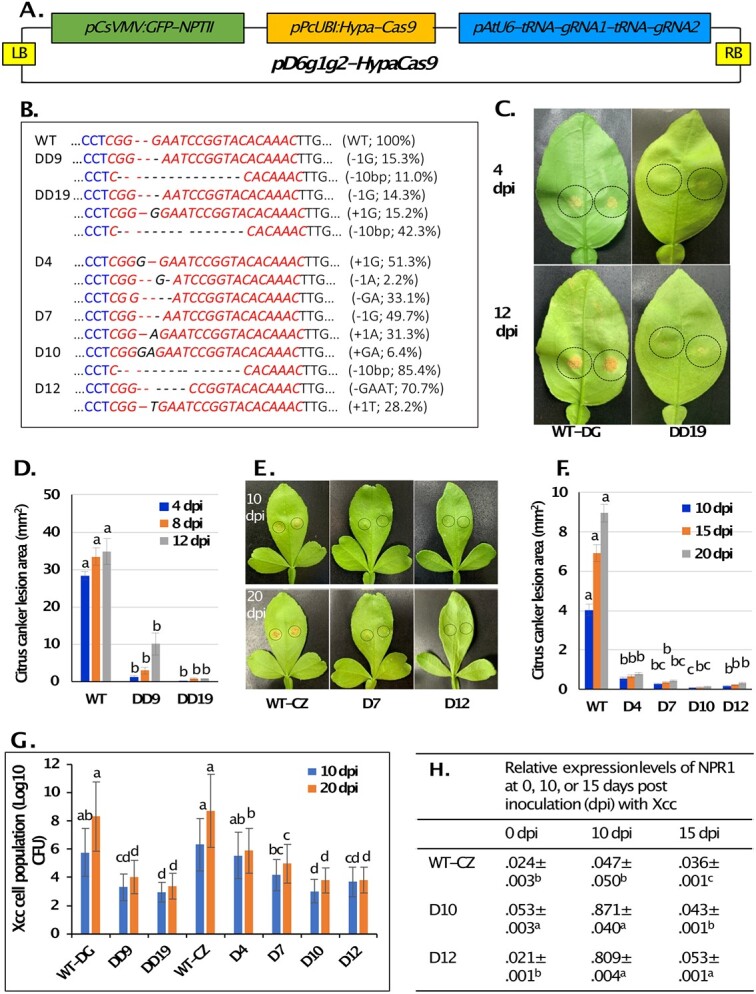Figure 1.

Citrus dmr6 mutants show resistance to citrus canker caused by Xanthomonas citri ssp. citri (Xcc). A. Schematic map of plasmid vector for editing CsDMR6. B. DNA sequences of wildtype (WT) and dmr6 mutants at the first gRNA-targeted region, mutations, and mutation frequencies (in parenthesis) in “Duncan” and Carrizo. C and D. Citrus canker lesions (C) (within the dotted circles) and lesion size (mm2) (D) on leaves of wildtype “Duncan” grapefruit (WT-DG) and mutant DD19 at 4, 8 (in D only), and 12 days post inoculation (dpi). E and F. Citrus canker lesions (E) (within the dotted circles) and lesion size (mm2) (F) on leaves of wildtype Carrizo (WT-CZ) and mutant D7 and D12 at 10, 15 (in F only) and 20 dpi. G. Xcc cell populations (Log10 of colony-forming units per cm2) in leaves of wildtype “Duncan” (WT-DG) and Carrizo (WT-CZ) and mutants DD9, DD19, D4, D7, D10, and D12) at 10 and 20 dpi. H. Relative expression of NPR1 in leaves of wildtype Carrizo and mutants D10 and D12 prior to and 10 and 15 dpi. The glyceraldehyde 3-phosphate dehydrogenase (GAPDH) gene was used as a reference gene to calculate the relative gene expression level of NPR1 using the 2-ΔΔ(Ct) method.
